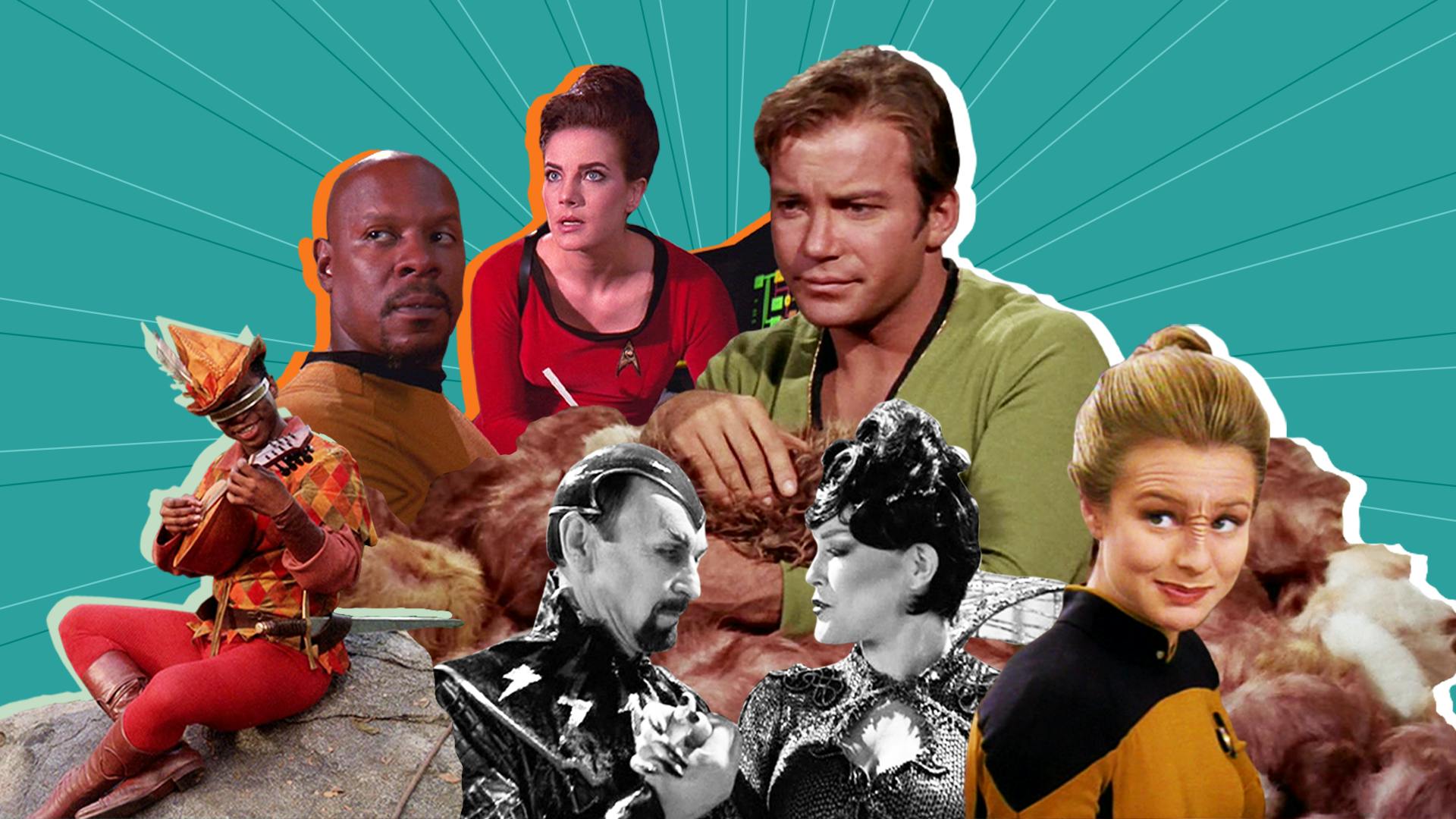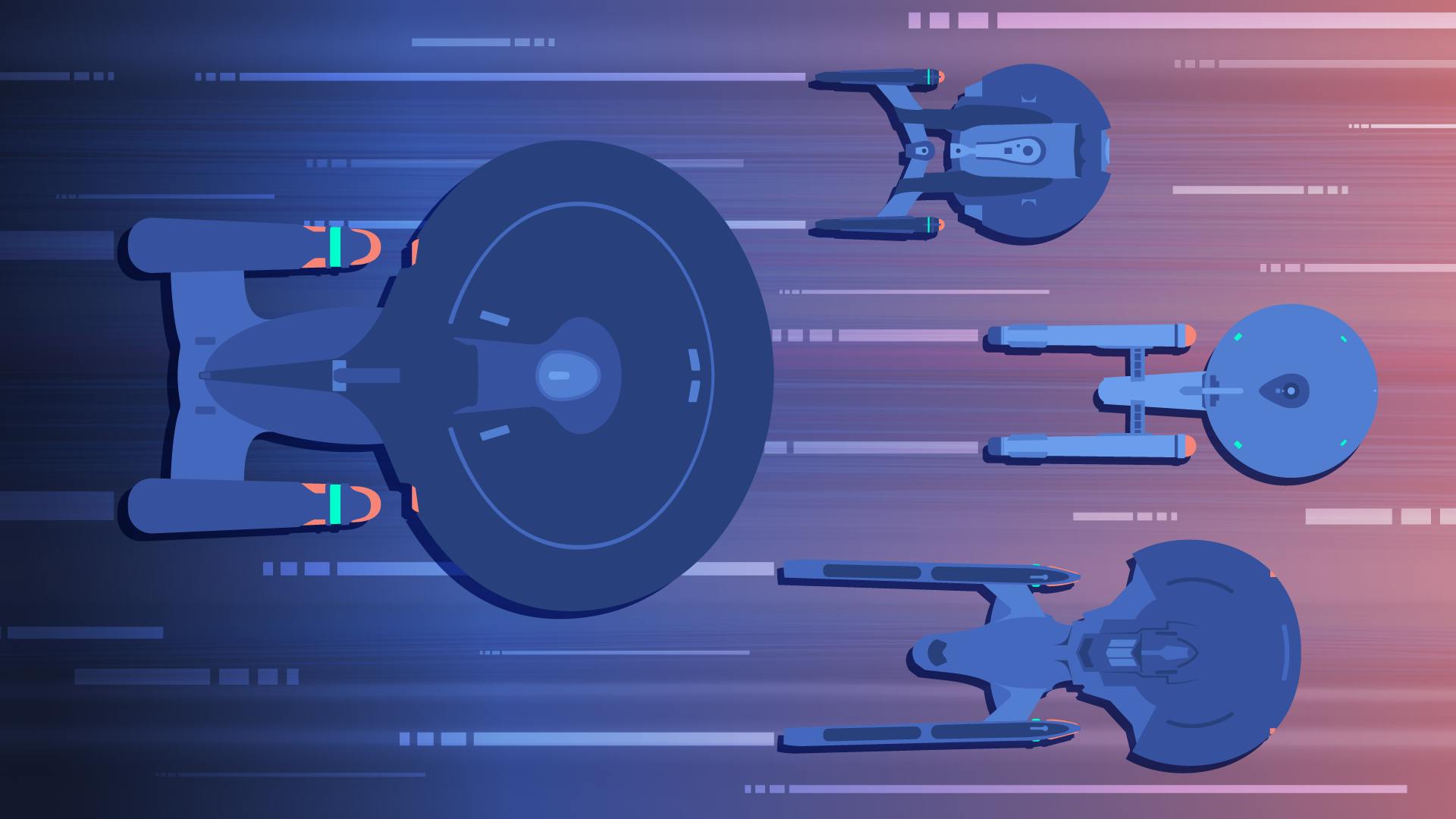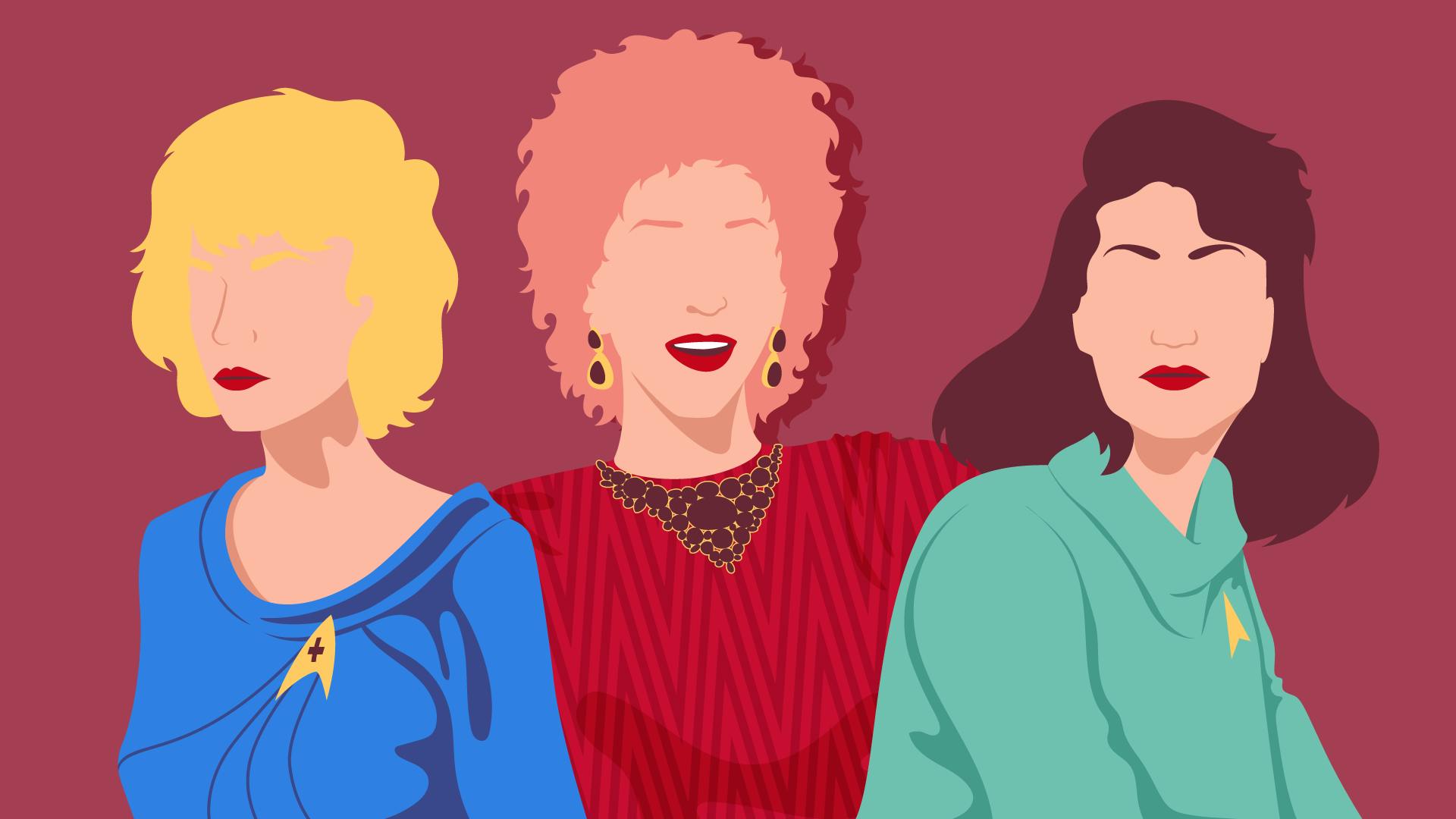Published Jun 26, 2020
Aces in Space: An Asexual Reading of Star Trek
The full LGBTQIA+ spectrum may not yet have been fully explored on Trek, but asexual fans have still found characters to relate to.
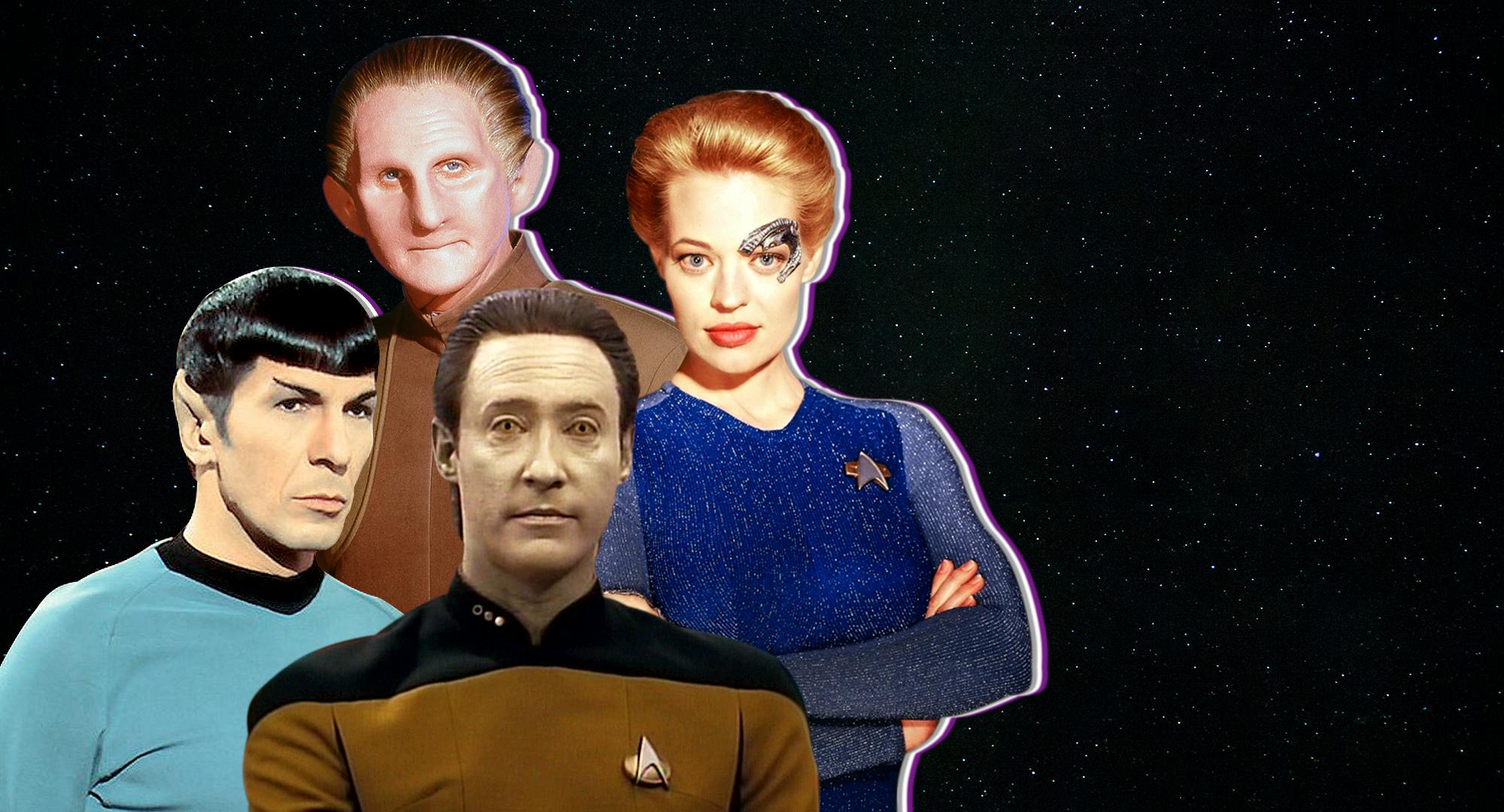
StarTrek.com | Shutterstock/McCarthy's PhotoWorks
From the dancing Orion slave women of The Original Series to the languorous shots of naked skin in the decontamination chamber on Enterprise, Star Trek exists in a very sexy universe. But those particular scenes, and the notion of real-life romance, completely bored me well into adulthood.
As a member of the asexual community, it took me a long time to recognize and accept myself for what I was. Asexuality is rarely recognized in the popular media we enjoy, although it is gaining recognition. Most people in cisgender, heteronormative communities struggle to understand what it's like to be "ace;" as do asexuals themselves, who have been given few tools by society with which to understand their own natures. As with other members of the queer family, asexuals have often had to read subtext in popular media carefully to find reflections of themselves. In addition to its steamier scenes, the Star Trek universe is also filled with characters who embody the asexual experience. By most definitions, asexual people feel very little or no sexual attraction to anyone of any gender. In this definition, sexual attraction is separate from aesthetic or romantic attraction: aces may still be drawn to certain people based on appearance or personality, but do not feel a desire to have sex. Some aces do choose to have sex for various reasons: curiosity, or in an attempt to please a partner, for instance. Others may never take a sexual partner. This is not to say that all asexuals spend their whole lives loveless and lonely. Many seek close platonic friendship. Some choose to stay single, and others find loving life partners who understand and respect their sexual preferences.
Some argue that aces don’t belong in queer spaces, since many of them can “pass” as cisgender heterosexuals without being subjected to the same hateful prejudices and mistreatment of many others in the queer community. But asexuals certainly don’t belong fully in cishet spaces, either. Like other people in the LGBTQIA+ community, they go through the same process of questioning who they are, wondering if they are broken, and even coming out to family and friends, who are not always understanding of their identity.
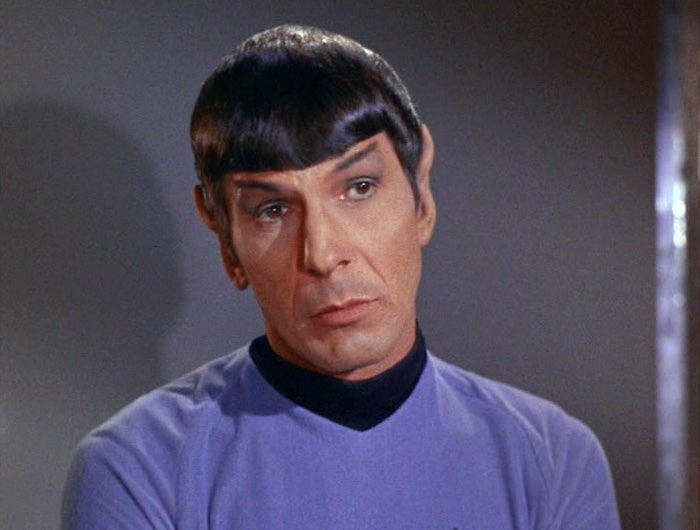
StarTrek.com
From Star Trek’s beginning, Spock’s Vulcan restraint and lack of passion was incomprehensible to his human crewmates. As an utterly logical species, Vulcans approach sex in a way that’s very different from what humans are used to. Vulcan sexuality includes the Pon Farr ritual, in which Vulcans experience a violent drive to mate every 7 years. Though writer D.C. Fontana has made it clear that Vulcans can and do have sex outside of pon farr — motivated by similar emotions as humans — many asexuals have identified with Spock’s disinterest in passionate emotions such as sexual attraction. At the end of the episode “Wolf in the Fold,” Captain Kirk hesitates on the brink of inviting Spock to join other men from the crew in enjoying a performance by a scantily clad green-skinned woman in a smoky lounge on the planet below. Considering Spock’s serious composure, Kirk grins knowingly and instead says, “No, I suppose not.”
The Original Series had some very heteronormative ideas about relationships, but it made room to recognize and accept the different sexual and romantic practices of Vulcans, which manifested much differently than that of humans.
Data in The Next Generation resonates especially well as a potential ace character. As an android incapable of experiencing human emotion, his connections with people are motivated primarily by curiosity. He chooses to have sex with Tasha Yar in “The Naked Now” in order to participate in a pleasurable mutual experience, as many asexual people do, but his close relationships are never based on sexual attraction.
One of the best potential asexual storylines might have been Odo on Deep Space Nine, who could even be considered nonbinary or agender. (In fact, in a 2017 Star Trek Waypoint comic, Odo outright stated that he has no real gender.) The Changeling species does not require sex for reproduction, but Odo has been raised among humanoids. Odo pursues relationships with several women over the course of the series, enduring a somewhat toxic relationship with a female Changeling before finally entering a relationship with Colonel Kira. Although he engages in sex in both of these relationships, his intimacy with the female Changeling is manipulation on her part to take advantage of Odo’s desire to learn more about his own species. His relationship with Kira, meanwhile, is what a healthy relationship might look like between a sexually driven partner and an asexual one, where both of their needs are met. There’s a particularly beautiful scene between them where Odo manifests to her as a sheen of golden light: not inherently sexual in nature, but tender and intimate nonetheless.
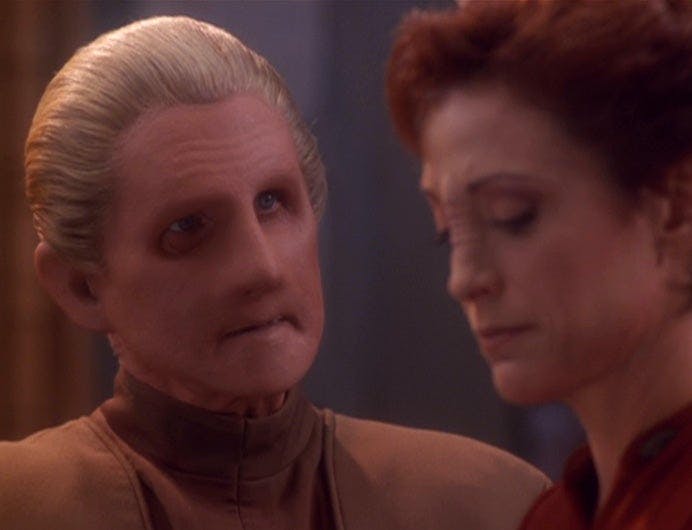
StarTrek.com
Some Voyager fans consider Seven of Nine a potential ace character. She spends the series recovering from her assimilation into the Borg collective, reforming herself from a drone and rediscovering her underlying humanity. As the crew, and the holographic doctor, in particular, coach her back to expressing her human nature, they pressure her into romance as an important part of her self-actualization, despite her having shown no clear attraction to any person in particular. She fumbles through a date with a random crewman on the holodeck while trying to force the experience, eventually twisting his arm so badly during an attempted dance that the date is cut short. This discouraging experience of going through the motions without a true interest in dating is easily recognizable to many on the asexual spectrum. By the time of Star Trek: Picard, Seven has had time to further explore her identity, and many fans are pleased to see her on her way to a relationship that makes more sense for her.
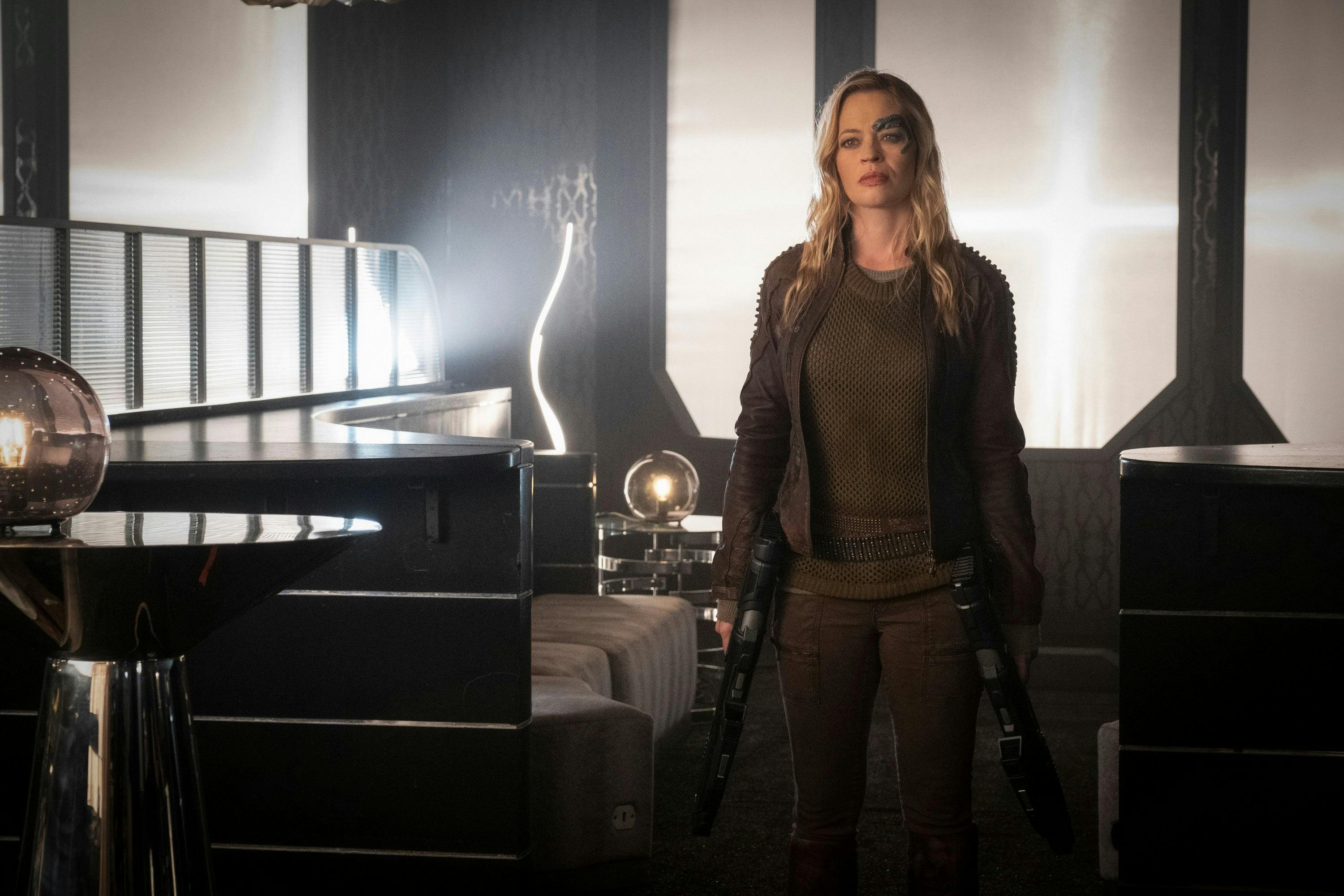
StarTrek.com
There’s a trend in these ace-resonant characters: they’re often the “other” character in the group. The one who doesn’t quite understand the human experience. People of every kind of minority status have recognized themselves in the “othered” characters of Star Trek; aces are only one group among many. Some may consider it problematic, only being able to find familiarity in the more robotic and alien of characters — subtly reinforcing the narrative that ace people, or people who do not present as cishet, are somehow less than human.
The discussion of asexuality and Star Trek warrants at least a mention of The Next Generation episode “The Outcast,” in which the crew meets a race of androgynous, genderless aliens whose culture regards sex and sexual attraction as perverted. This is not a good representation of human asexuality, which is often sex-positive and affirming of people’s right to love anyone they choose. As television adapts to showing more inclusive depictions of sexuality, it can be difficult to work something like asexuality naturally into a storyline. Discovery and Picard have already taken the next steps at normalizing queer relationships, and with so much new Star Trek on the horizon, there is plenty of room for even more improvement.
Producing Star Trek: Picard: Seven of Nine Returns
Jackie Bussjaeger (she/her) is a writer and environmentalist from Minnesota who takes her Earl Grey hot and her coffee black. Find her on Twitter @jackiebus.
